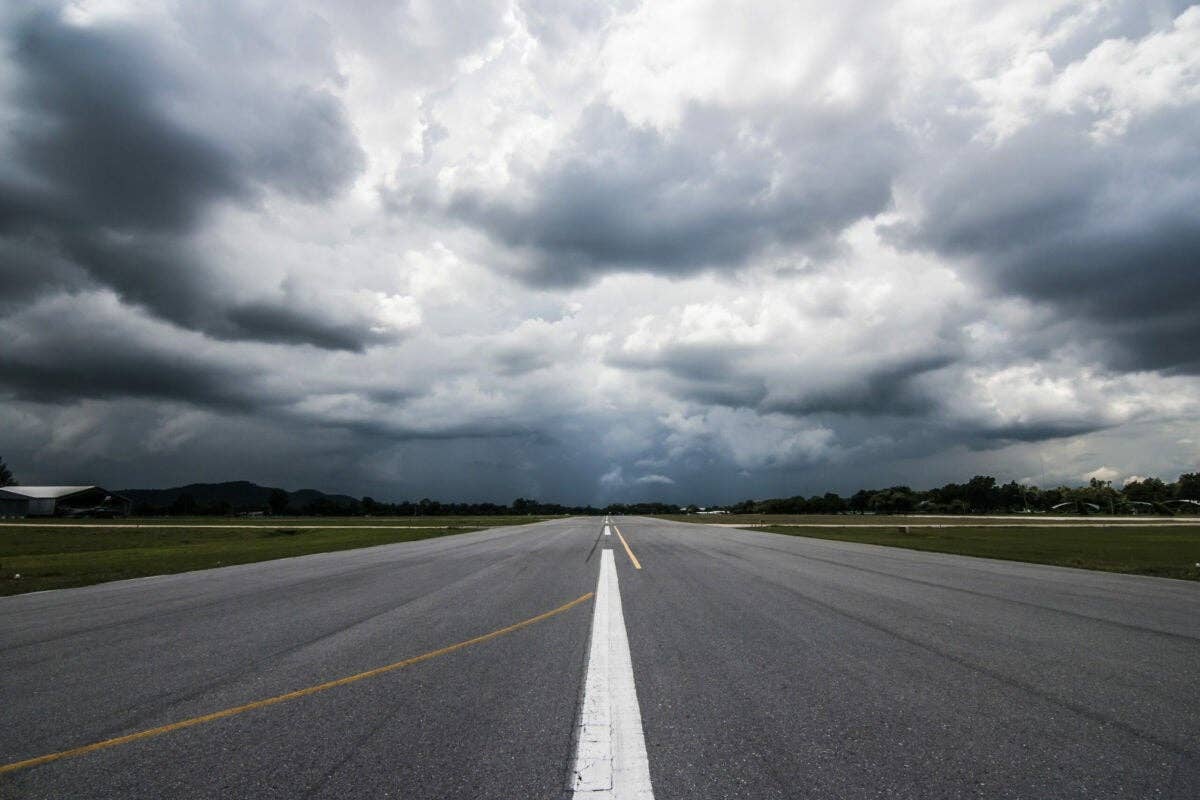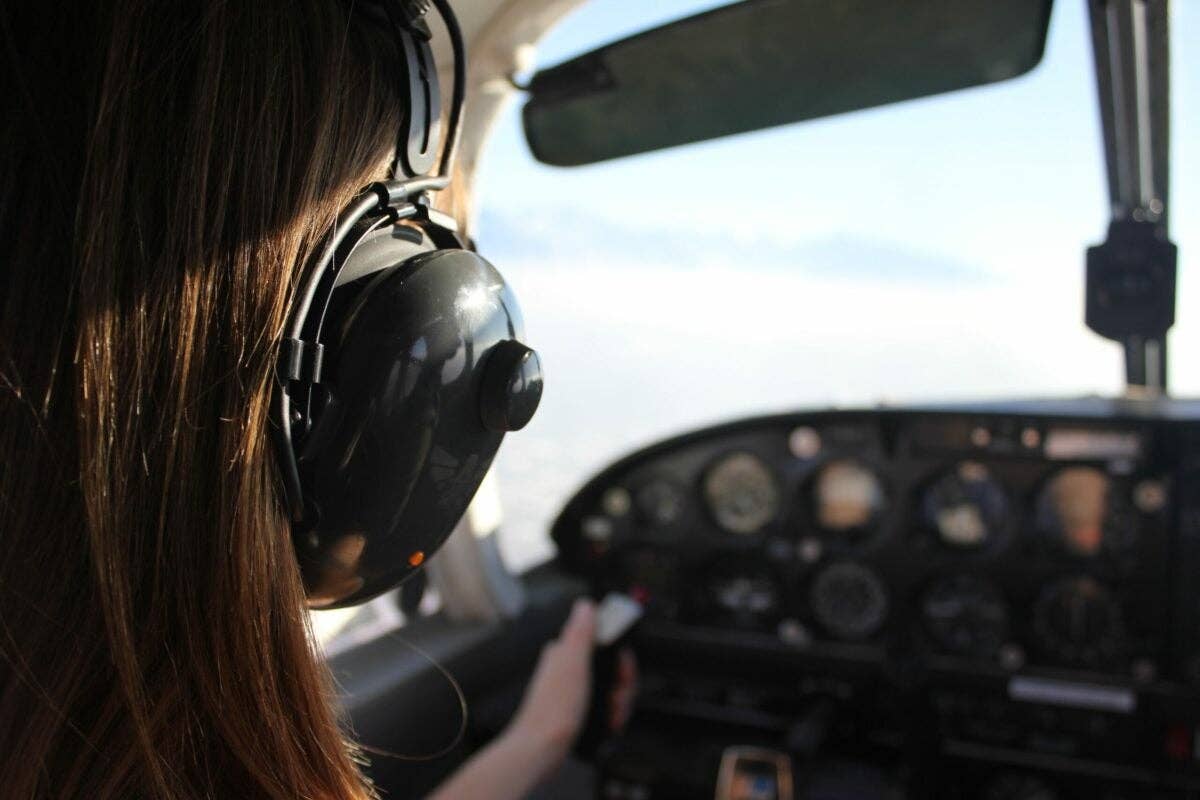
To see more of Barry Ross’ aviation art, go to barryrossart.com Barry Ross
As a relative newbie to flying in “weather,” I am impressed when I fly along VFR with more seasoned pilots in haze that would scare me if I were alone. “It’s just haze, with a good 5 miles of visibility,” I am often told. But looking straight ahead through 10 miles of mild haze is indistinguishable to me from a thick, impenetrable wall of haze with less than VFR minimums. Sometimes it’s very, very hard to tell the difference. Sometimes, the difference can be fatal.
I was departing my beloved home base of Chicago Executive Airport (PWK) one spring day with light haze — at least that’s what it looked like to me. I was making a run to nearby Burlington Municipal Airport (BUU) for self-serve fuel because at $7.70 a gallon for 100LL at PWK, it’s a trip many of us make frequently.
PWK is a towered airport and the third busiest in Illinois after O’Hare and Midway. A mere 10 nm from O’Hare, we even have a small slice cut out of its Bravo airspace. ATIS called for VFR with the ceiling just above 3,000 feet and visibility of 5 miles in haze. The TAF called for similar VFR conditions for another four hours. Runway 16/34 is the big one at PWK (5,000 by 150 feet), but with my T-Hangar right off Runway 30, I accepted that for my departure.
It was a pretty standard takeoff in my new, beloved Bonanza. I rotated nicely, gear up and making my turn to the north where I would cross the Runway 34 centerline before incoming jet traffic. Looking ahead, even at 1,500 feet agl the haze looked solid, but as I said, 10 miles of light haze will still look the same as 1 mile of solid haze. I was climbing to the northwest as I watched the approach end of Runway 16 dart in and out from behind some low-lying haze. For a few seconds on and off, the ground disappeared behind a small puff of haze and clouds. Then, just white. At 2,000 feet agl, I waited a few seconds for the ground to reappear so I could turn around and call this a day. I would not be filling up with fuel. That moment didn’t come. Suddenly, I was approaching 2,500 feet agl, the floor of O’Hare’s airspace, and punching through solid clouds at 120 knots. If “scared” is on a checklist, I had that one marked off already. Not panic, but fear. IFR pilots fly in this stuff without batting an eye; VFR pilots, in this situation unexpectedly and flying alone, don’t. It is scary.
“Fly the airplane,” I told myself. However I was going to get myself out of this, it wasn’t going to be by doing anything stupid. Descending through clouds was not an option for reasons I’ll explain, and I didn’t hesitate to call the PWK Tower (which has some very nice folks, by the way).
“Executive Tower, Bonanza 78HF. I’m in solid IMC. I need to declare an emergency,” I said as calmly as possible. The reply came, “78HF are you IFR rated?” to which I replied, “Negative, just started working on it.” The controller said, “78HF stand by.”
There was a pause, then, “78HF contact O’Hare Departure on 125.0.” My heart was pounding as I remembered my rudimentary IFR instruction: 5 degrees nose up, 500 fpm rate of climb, wings level. Trust your instruments. That didn’t sound so hard when I was under the hood with a CFI-I next to me in VFR, but now … Then, “O’Hare Approach, this is Bonanza 78HF at 3,000 and climbing.”
I quivered as I talked to the people who normally spend their day lining up jumbo jets by the dozen that stretch out as far as the eye can see, but who were now stuck baby-sitting me. The voice came back calm, even and almost mundane. “78HF, squawk 1234 and ident,” which I did and confirmed. “78HF,” the controller returned with a familial, patient voice, “radar contact one five miles north of O’Hare. Say intentions.”
Intentions? My intentions were to get out of this mess I’d gotten myself into, that’s what my “intentions” were! But instead I said, “I just need anyplace VFR to land. I’m seeing some blue stuff above me, and uh, OK, I’m now VFR on top at 4,100 feet.”
“Roger 78HF. Can you see any openings from where you are?” the controller asked. “Negative,” I replied, “I’m just above the tops and it’s overcast as far as I can see in front of me.”
“Stand by,” he said. Sure, no problem, I thought. It wasn’t as if I was going to wander off and try something on my own here. Moments passed, then, “78HF, fly heading 040 to Waukegan. They are reporting sky clear.”
So I did, with ATC asking if I had the airport in sight as I got closer. I didn’t, and I wasn’t going to let go of this guy until I was close enough to Waukegan to read the tail numbers on the flight line. Finally, Waukegan peeked out just beyond a line of solid overcast, which would cover it in a few minutes. “78HF, I have the airport in sight,” I said. “Roger, 78HF. Contact tower on 120.05, squawk VFR,” and he was gone before I could say thank you. I landed uneventfully. PWK was solid IFR by the time I tied down.
My first phone call was to my good friend Dick, whom I met online on a Bonanza website (beechtalk.com), and who had befriended me and mentored me long and from afar (he lives in the Detroit area). “Hi, Dick,” I said in my calmest possible voice. “I just came out of Executive, flew IMC, busted O’Hare’s airspace and landed at Waukegan,” I blabbered. The adrenaline was wearing off, and the shock of what had just happened was sinking in. “Are you OK, is anyone hurt?” he asked. “Yes, and no — in that order,” I said as calmly as I could.
Then came a deeper, more somber tone as he asked his next question. “Did you declare an emergency, Henry?” he asked flatly. I didn’t know if the question was intended as an accusation or with an eye-roll, but I told him the truth. A pause and a deep breath came over the phone as I heard his solemn response. “Henry, I’m proud of you. You did the right thing.”
Suddenly, all was right with the world. Dick is a CFI-I, a retired corporate pilot for GM, one of the first private pilots to fly into Moscow, and someone whom I have come to respect deeply over the years. (Not that I’d ever admit that to him, of course.) But as long as Dick confirmed that I had done the right thing, then I could not care less what the FAA would do to me. Dick said that I did the right thing; everything else was secondary. It still took most of the next hour before my wife came to pick me up and the jitters subsided, but mentally, I was as whole as I could hope for.
I filed the NASA “get out of jail free” aviation safety reporting system form online the moment I got home and waited for the inevitable FAA call asking, “Just what the heck do you think you were doing flying IMC into ORD airspace with a VFR ticket?” But the call didn’t come that week, or ever.
At a recent safety seminar by the Chicago Executive Airport Pilot’s Association, the speaker asked, “How many of you have ever declared an emergency?” Over a dozen hands went up. “Now,” he continued, “how many ever had to do any paperwork because of that?” Not a single hand went up. Not one.
Why? John Foster explained this at one of his talks at the Beechcraft Pilot Proficiency Program (BPPP) I attended at Oshkosh. John is a retired controller out of the Boston ARTCC (air route traffic control center) with a lifetime of experience and sage insight. “Don’t let the fear of a reprisal from ATC affect your decisions. Do what you need to do, and if the FAA wants a letter or to hold a hearing ... so what? Your only job is to be alive at the hearing! Nothing else matters.”
A fellow pilot whom I met at Oshkosh in my first year as a pilot told me how he got caught VFR on top and low on fuel. Very low on fuel, he said. He confessed his predicament to ATC and declared an emergency. ATC spent over 30 minutes finding him an open hole and clearing all traffic around him. “I felt so stupid and ashamed,” he confessed. As he came down through the hole in the overcast, he contacted ATC fearing the worst. “Piper 1234, I have the airport in sight, and uh (gulp) who do I need to talk to about my incident?” he asked. ATC replied matter-of-factly, “What incident? Squawk VFR, frequency change approved, and have nice day.”
What did I learn about flying from that? Emergency is not a four-letter word.

Sign-up for newsletters & special offers!
Get the latest FLYING stories & special offers delivered directly to your inbox






